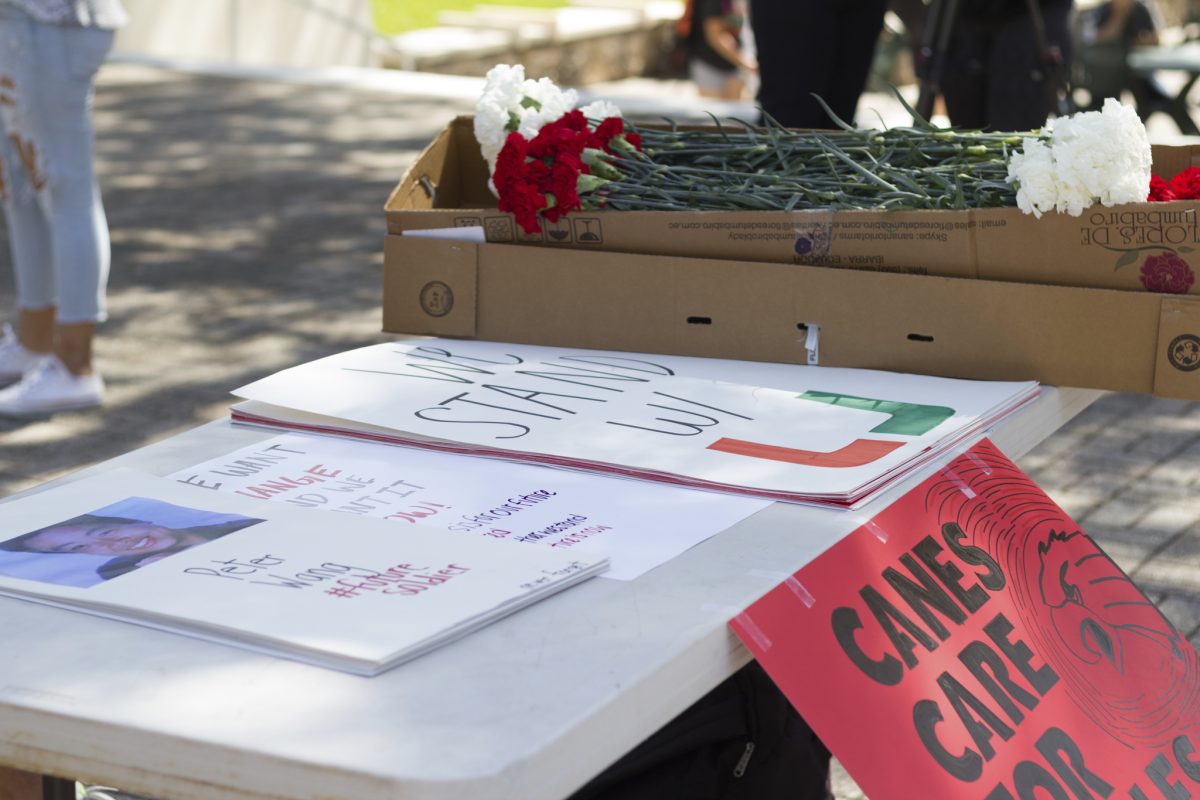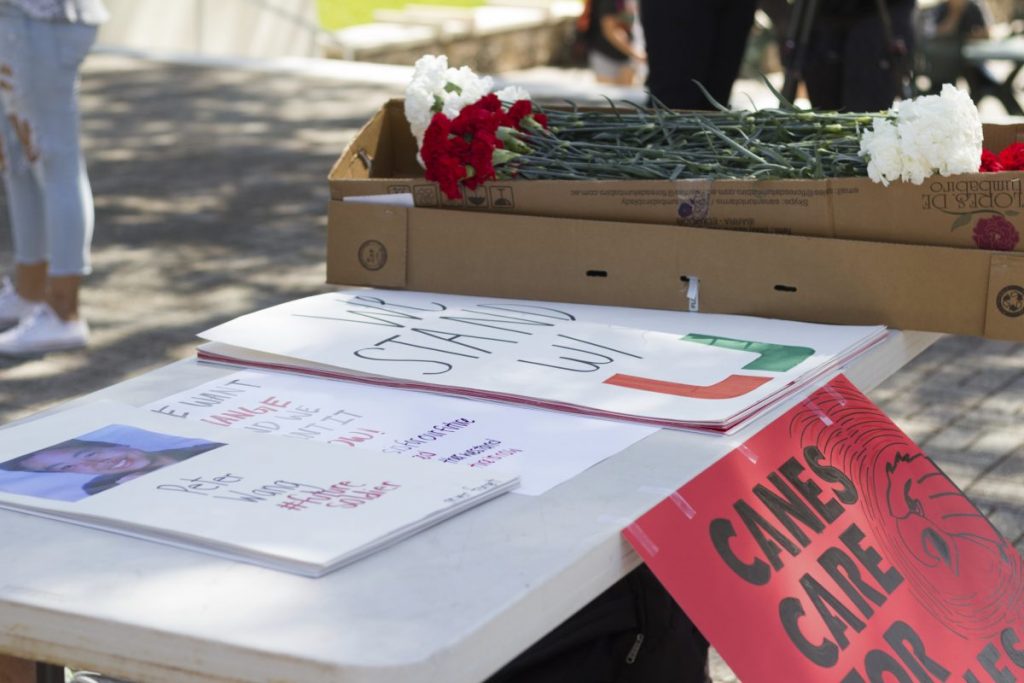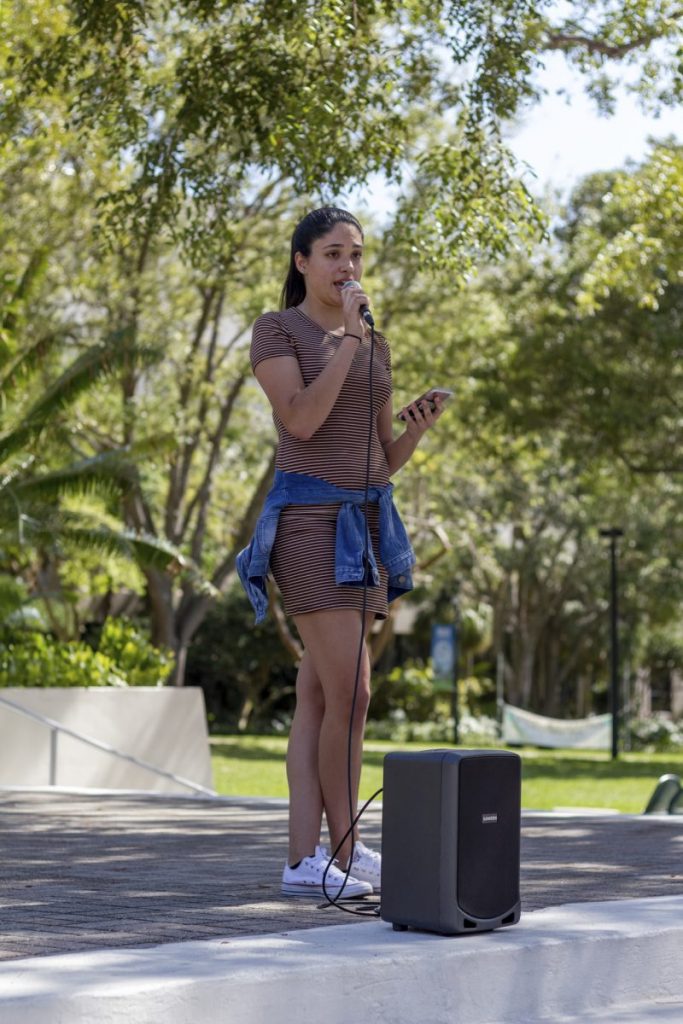
The Canes Care for Eagles March had hundreds of students interested in the event on social media. Yet when the march actually took place two weeks after the Marjory Stoneman Douglas High School shooting, less than two dozen people showed up.
Canes Against Gun Violence, a student-led unofficial coalition that organized the event, took that as a sign and now, it is looking to focus on turning social media engagement into physical civic engagement.
“Our generation is very, very good at expressing their ideals and supporting them,” said Logan Smith, one of the creators of Canes Against Gun Violence. “But sometimes, getting us on the ground can be a little bit more difficult.”
Two weeks after shots rang out in Marjory Stoneman Douglas High School in Parkland, Florida, killing 17 and injuring more than a dozen, the small group of students, with carnations and signs in hand, made its way from the Rock Plaza on campus to Coral Gables City Hall to honor the lives of those lost. The group also marched to stand with the Coral Gables City Commission in its decision to back a resolution which would urge state and federal legislators to make assault rifles and weaponry less easily accessible.
Smith, a sophomore double majoring in jazz voice performance and political science, said he created the march and unofficial coalition because gun control is an issue he has always been passionate about. Being from Colorado, Smith said he’s seen multiple shootings occur in his home state during the time he was in high school, including the 2012 Aurora movie theater shooting that left 12 people dead.

Smith said he’s looking to create events or sessions on campus to increase “physical” civic advocacy rather than civic advocacy on the internet. He was one of two students to show up for the City Commission meeting on Feb. 27, where commissioners decided on the resolution. Though the passing of the resolution was successful, he said he’d like to see more students be actively involved instead of just voicing their support on social media.
“People see these numbers and see how they affect our city commission,” Smith said. “Having two students show up, that’s amazing and that shows that Canes Against Gun Violence cares, but what would’ve been even more amazing is to have 50 to 100 students in that City Hall.”
The MSD shooting on Feb. 14 sent shockwaves through the nation and led to public outcries for stricter gun regulations. Marches across the United States, including one spearheaded by the survivors of the shooting to Tallahassee, have put a revamped focus on the polarizing issue.
Freshman Elizabeth Rodriguez, co-creator of Canes Against Gun Violence, said seeing these national movements for gun control inspired her to bring a similar event to the University of Miami’s Coral Gables campus.
Rodriguez said she felt a “deep connection” to the shooting because she lives a few miles from Parkland, in Coral Springs, Florida.

While speaking to students before the beginning of the march, Rodriguez said she remembered “the fear and anxiety” of a panicked situation like a shooting because last year, she completed training for an active shooter situation, which included a realistic scenario, turning all the lights off and using text books as shields.
“We will be the last community,” said Rodriguez, a double major in political science and public health. “I am marching for the 17 who cannot … I am marching because I refuse to allow this to continue.”
Rodriguez, alongside the other students, walked the 2.4 miles to city hall. Throughout the march, the 17 names of the victims were read with a description of what they would have become known for had they lived through the shooting. When the group arrived at City Hall, the carnations were dropped, surrounding a statue directly in front of the building and the names were read again to commemorate the 17 dead.
Daniel Molina, a Broward College student from the Parkland area, attended the march and said he did so for those 17 that “would be doing the same if it was someone else that would have passed.”
While Molina said his community is doing “better” since the shooting, he said the nation needs to continue to push for change for those who can’t.
“We want to make sure that they’re heard even though they can’t be here,” he said. “We’re their voice. We’re their feet as we march.”






